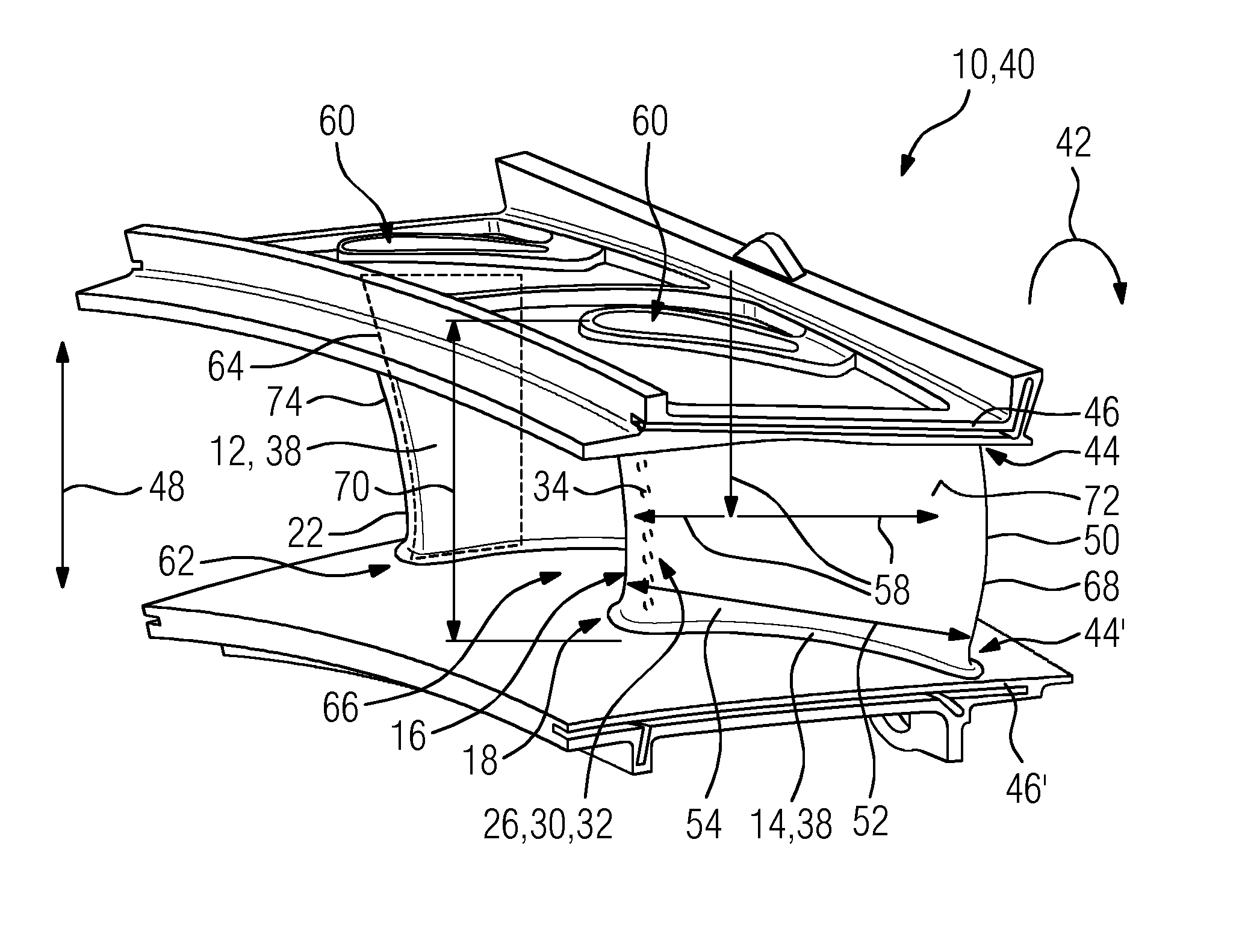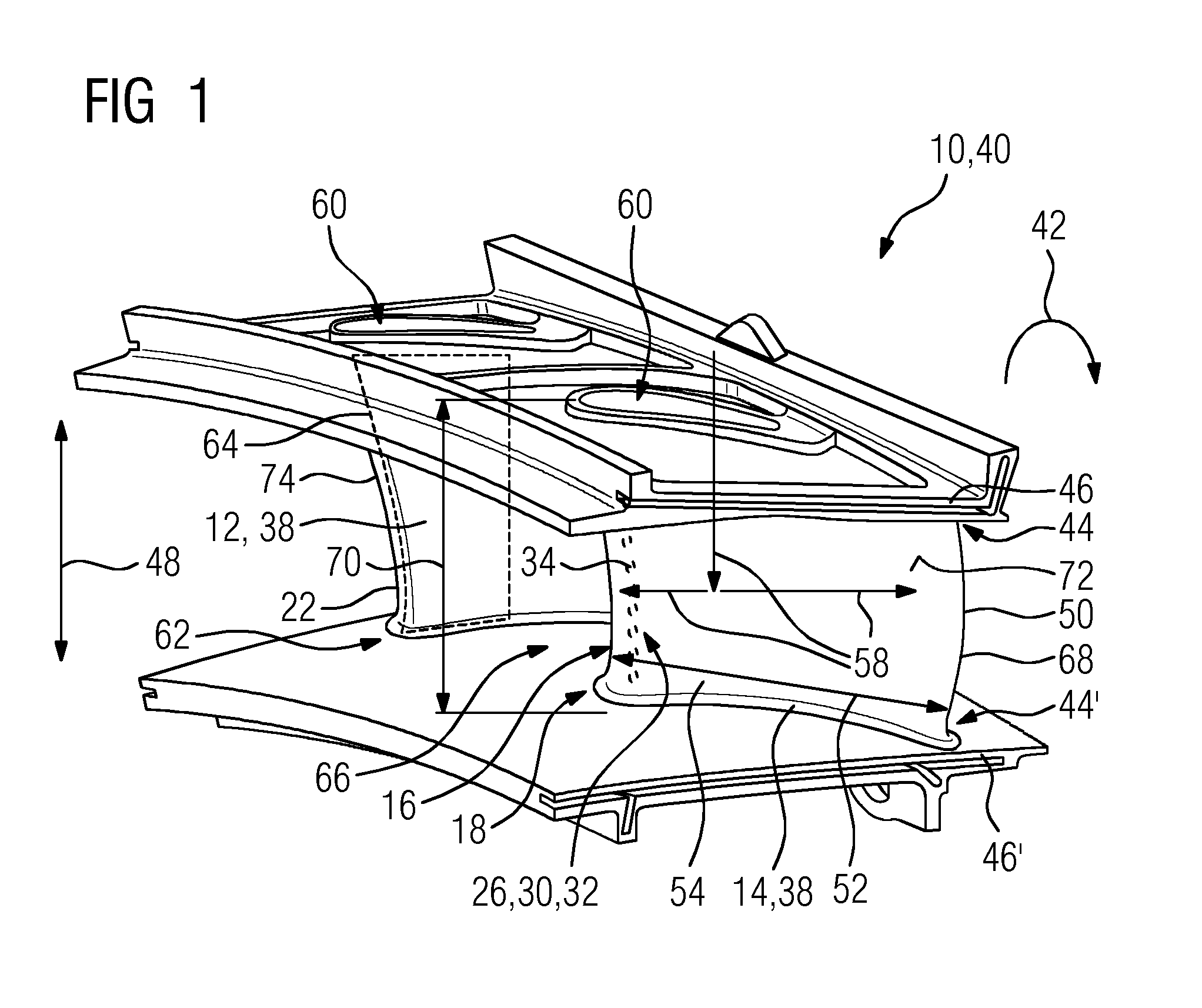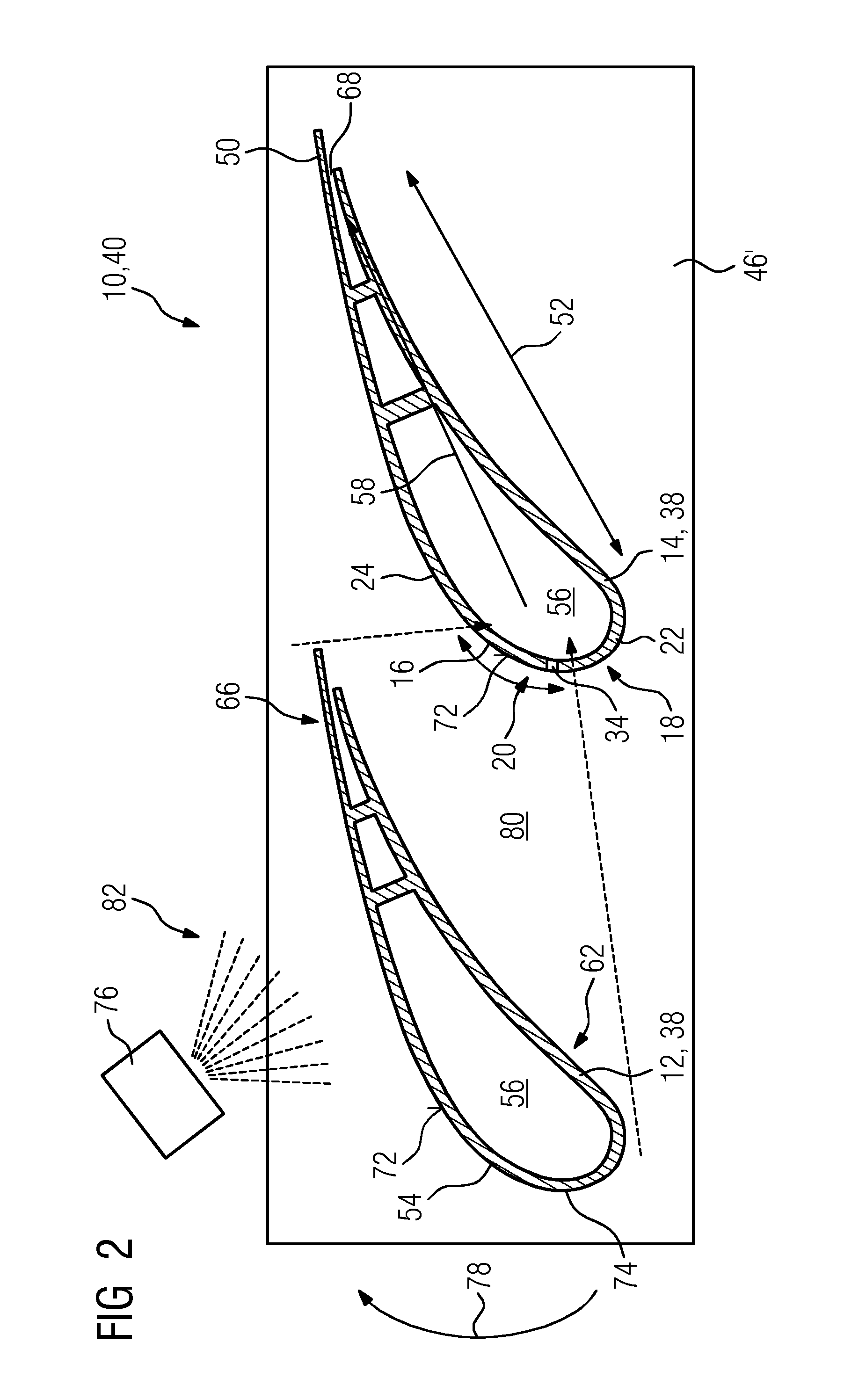Method for manufacturing a turbine assembly
a manufacturing method and turbine technology, applied in the direction of machines/engines, liquid fuel engines, forging/pressing/hammering apparatuses, etc., can solve the problems of increased cost, increased number of parts to handle, and increased cost, so as to reduce the loss of aerodynamic/performance, improve engine performance, and reduce the effect of cos
- Summary
- Abstract
- Description
- Claims
- Application Information
AI Technical Summary
Benefits of technology
Problems solved by technology
Method used
Image
Examples
Embodiment Construction
[0030]In the present description, reference will only be made to a twin aerofoil segment embodied as a double vane segment, for the sake of simplicity, but it is to be understood that the invention is applicable to both blades and vanes of a turbine.
[0031]FIG. 1 shows a perspective view of a turbine assembly 10. The turbine assembly 10 comprises a turbine cascade with a plurality of twin aerofoil segments 40 arranged one after the other in a circumferential direction 42 of the turbine cascade (not shown), wherein one twin aerofoil segment 40 is exemplarily shown in FIG. 1. A turbine assembly 10 or the twin aerofoil segment 40 comprises two aerofoils 12, 14 that are arranged in circumferential direction 42 adjacent towards each other. Thus, each aerofoil 12, 14 is embodied as a turbine vane 38. At two radial ends 44, 44′ of each aerofoil 12, 14, wherein the ends 44, 44′ are arranged opposed towards each other at the aerofoil 12, 14 an outer and an inner platform 46, 46′ are arranged....
PUM
| Property | Measurement | Unit |
|---|---|---|
| temperature | aaaaa | aaaaa |
| thickness | aaaaa | aaaaa |
| aerodynamic/performance losses | aaaaa | aaaaa |
Abstract
Description
Claims
Application Information
 Login to View More
Login to View More - R&D
- Intellectual Property
- Life Sciences
- Materials
- Tech Scout
- Unparalleled Data Quality
- Higher Quality Content
- 60% Fewer Hallucinations
Browse by: Latest US Patents, China's latest patents, Technical Efficacy Thesaurus, Application Domain, Technology Topic, Popular Technical Reports.
© 2025 PatSnap. All rights reserved.Legal|Privacy policy|Modern Slavery Act Transparency Statement|Sitemap|About US| Contact US: help@patsnap.com



